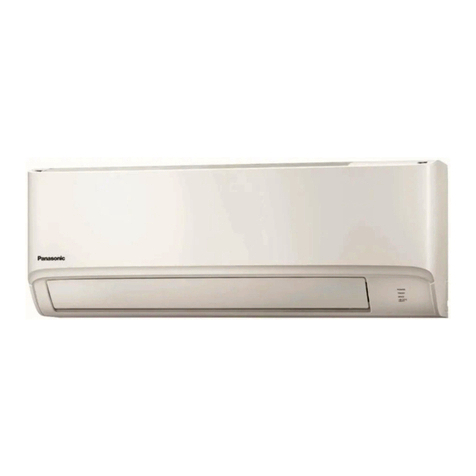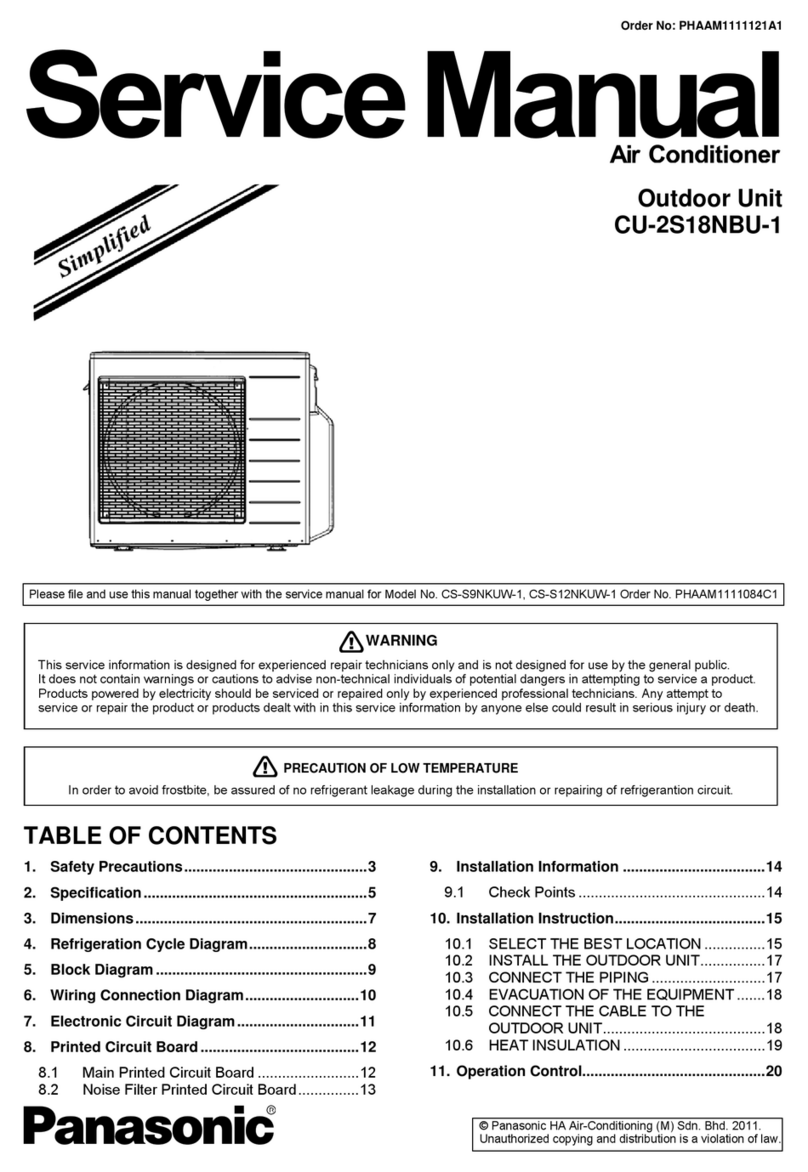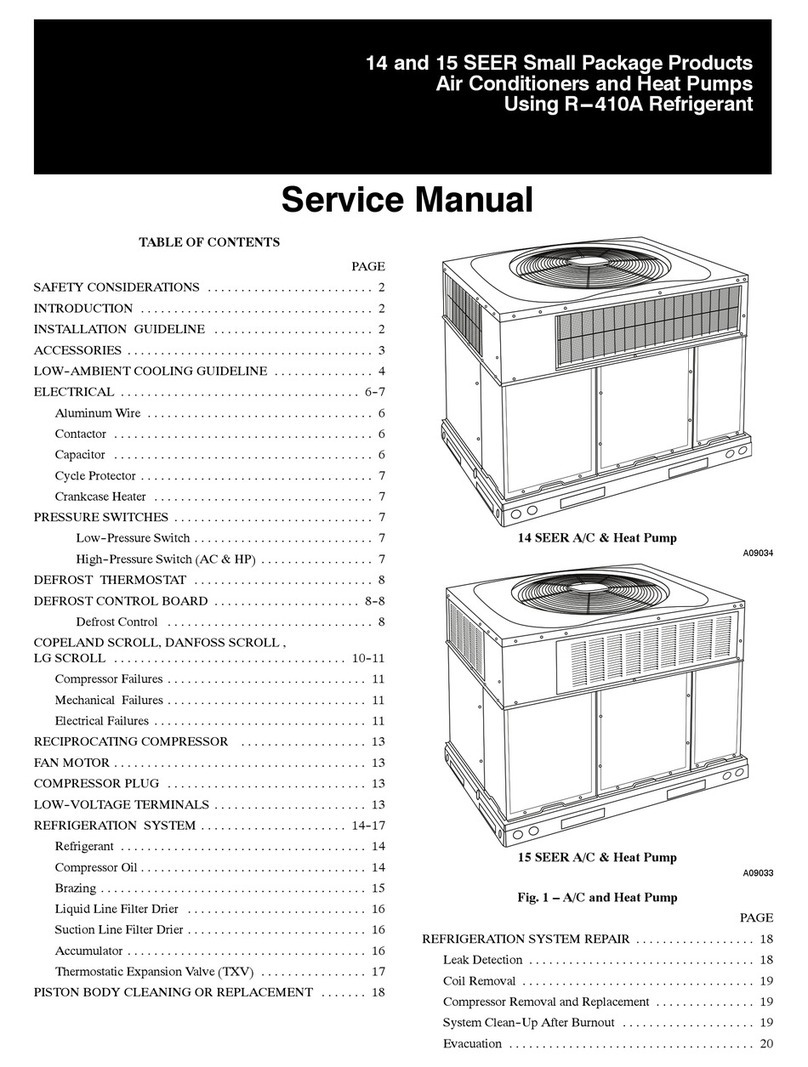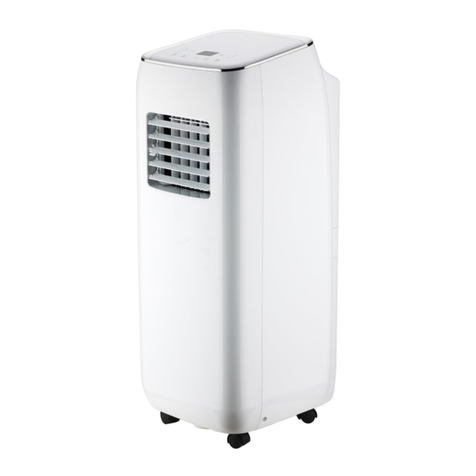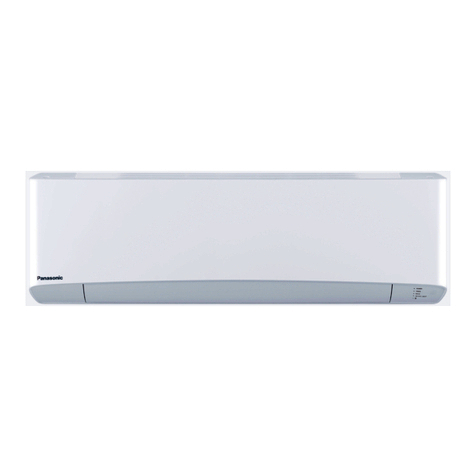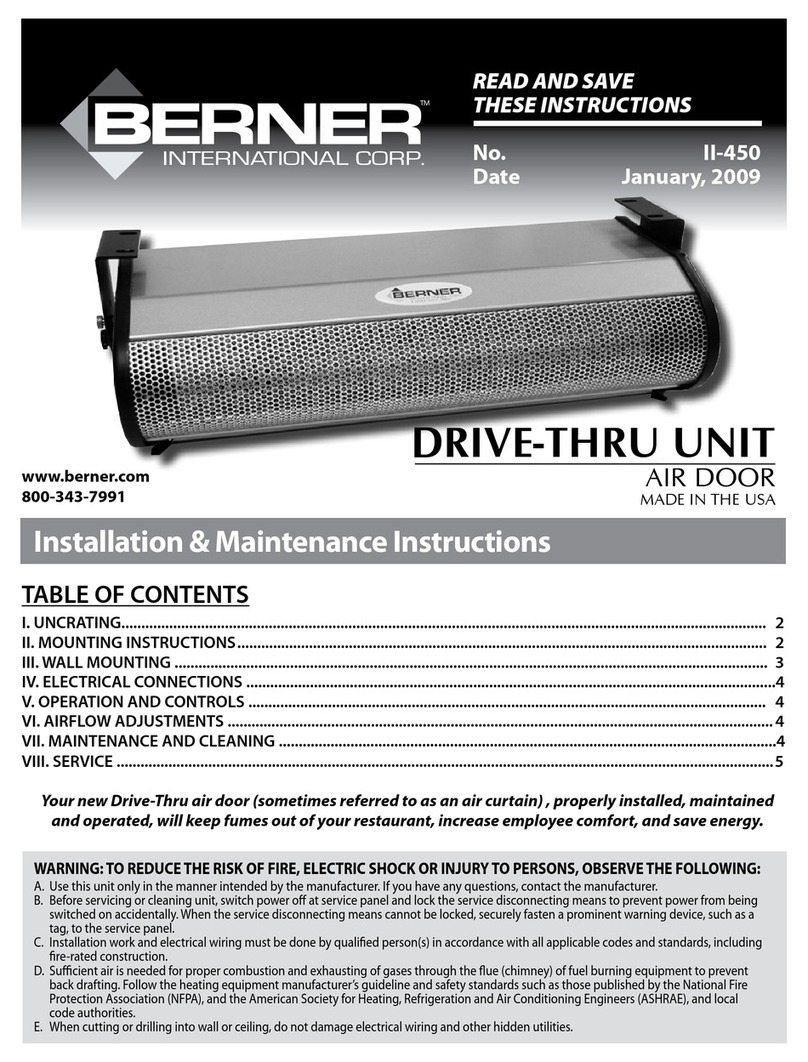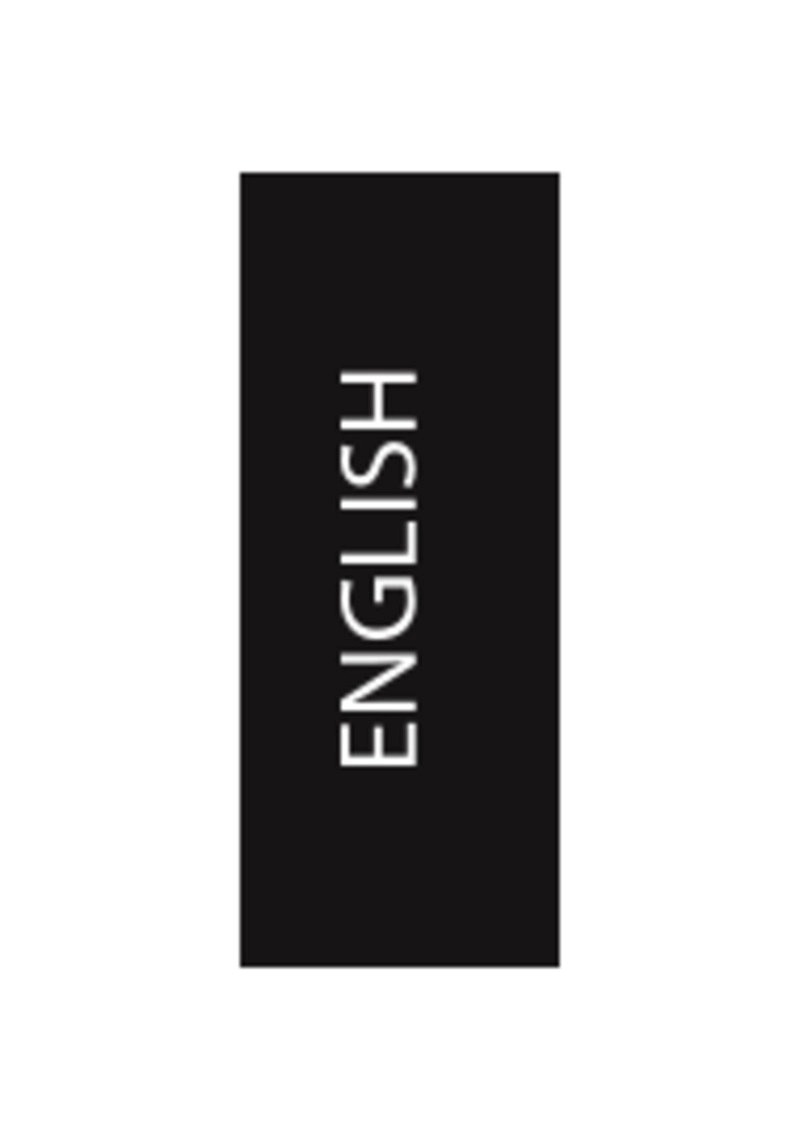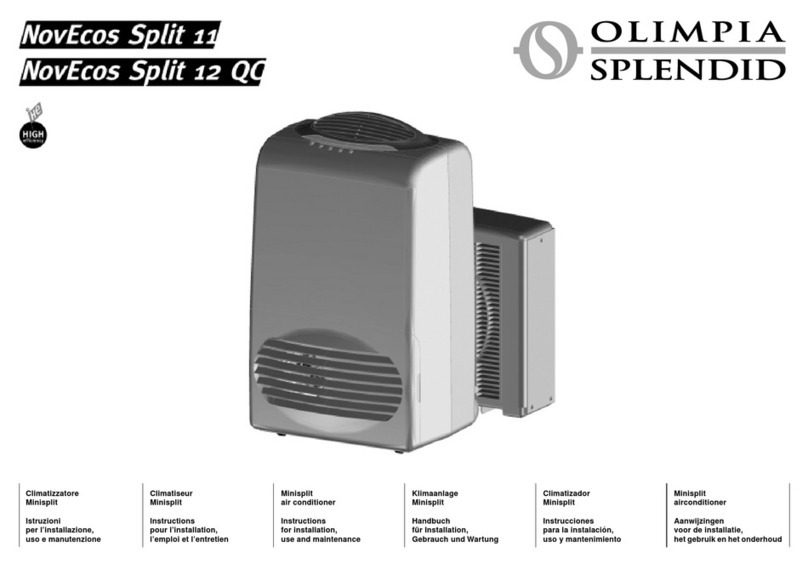Breezaire WKL SERIES User manual

8610 Production Avenue San Diego, California 92121 (858) 566-7465 Fax (858) 566-1943
BREEZAIRE Products Company - 8610 Production Avenue - San Diego, CA USA 92121 - (858) 566-7465
WKL SERIES
(USA ONLY)
--INSTALLATION INSTRUCTIONS--
Thank you for choosing a BREEZAIRE cooling unit. We believe our products are
the best on the market and will provide many years of trouble-free service.
Please take a few minutes and read this entire instruction before beginning the
installation.
MODEL _____________________ SERIAL NUMBER ______________________
INSTALLED BY ______________________________ DATE__________________
While great effort has been made to provide accurate guidelines, BREEZAIRE cannot warrant its units to properly cool
a particular enclosure. Customers are cautioned that enclosure construction, unit location and many other factors can affect
the operation and performance of the unit. Therefore the suitability of the unit for a specific enclosure or application must be
determined by the customer and cannot be warranted by BREEZAIRE.
Before removing the cooling unit from the box, please inspect for damage, which might have
occurred during shipping. If damage is found, notify the Freight Company immediately.
BREEZAIRE is not responsible for any damages during shipping.

WKL 3/11 PG 2
INSTALLATION INSTRUCTIONS
FOR WKL SERIES COOLING UNITS
The BREEZAIRE WKL Series cooling units are designed to, when installed in a properly constructed enclosure, provide a
constant, selectable temperature between approximately 48°F and 63°F while reducing the excess relative humidity to the
proper 50% to 75%. BREEZAIRE cooling units are designed to lower the temperature, while removing only excessive
moisture. In a properly constructed enclosure this process can raise the relative humidity. The unit does not add moisture
to the enclosure. The unit does not include a heating system and will not warm the enclosure. The WKL Series is not
intended to cool service cabinets, which are maintained at lower temperatures and opened or entered frequently.
The WKL Model has a digital electronic (Sentry III) thermostat that adds additional safety and convenience features:
Large, easy to read, green LED display.
Accurate, easy to adjust (no tools needed), readable set points with continuous reading of enclosure temperature or
displaying of set point when changing enclosure temperatures.
Power outage protection, which delays unit start up after power outages.
Blocked airflow protection, which shuts down unit and protects wine in case of high temperatures caused by condenser
blockage.
Controls temperature by enclosure air sensors or optional bottle probe.
ENCLOSURE CONSTRUCTION
To use the below SIZING GUIDE, the enclosure to be cooled must be built to the following minimum specifications. If the
enclosure cannot be built to these minimum specifications, consult your BREEZAIRE dealer for assistance in choosing the
correct unit. BREEZAIRE cooling units are not warranted to cool a specific enclosure.
All walls, floors and ceilings should have a vapor barrier. This vapor barrier should be installed on the warm side of the
insulation. All interior walls and floors should be lined with a minimum of R-11 insulation and exterior walls and ceiling
insulation value should be a minimum of R-19. There should be no glass doors and/or windows.
All joints, door frames, electrical outlets or switches and any pipes or vents which go through the enclosure should be
sealed to prevent air and moisture leakage into the room. Concrete and brick are not insulation or moisture barriers.
Doors into the enclosure should be of minimum size, insulated to R-11 and be tightly sealed with a high quality
weather stripping. Be sure to seal the bottom of the door and behind the door frame's molding.
Enclosure lighting should be of low wattage, with a timer to insure lights are not left on when the enclosure is
unoccupied. Recessed lighting should not be used, as they will allow outside air to enter the enclosure.
If the ambient temperature surrounding the enclosure should exceed the desired cellar's temperature by more than
25°F, the unit will produce less than its stated BTUs. No enclosure wall should receive direct sunlight or strong wind.
This is a mechanical piece of equipment, it will make noise and produce heat on the warm side exterior condenser
grille (Fig. 3). Remember, unit installation location is not only important inside the wine cellar, but just as important is
where the warm side exhaust air is being rejected.
Note: Glass doors and/or windows are not included in our calculations and should not be used in a wine enclosure.
SIZING GUIDE & SPECIFICATIONS
This guide to be used only for enclosures meeting the above construction requirements.
BREEZAIRE Model
Enclosure Volume
Electrical
Dimensions (inches)
Weight
WKL 1060
140 cu.ft.
3 Amp
14.25W x 13.25H x 16.38D
45 lb.
WKL 2200
265 cu.ft.
4 Amp
14.25W x 13.25H x 16.38D
55 lb.
WKL 3000
650 cu.ft.
5 Amp
14.25W x 19.75H x 21.63D
76 lb.
WKL 4000
1000 cu.ft.
7 Amp
14.25W x 19.75H x 21.63D
81 lb.
WKL 6000
1500 cu.ft.
9.5 Amp
16.25W x 22.00H x 21.63D
101 lb.
WKL 8000
2000 cu.ft.
10 Amp
16.25W x 22.00H x 21.63D
101 lb.
Note: All units are 115 Volt, 60 Hz. INSTALLATION
Before installing the unit, inspect it again for any shipping damage. Test the unit by placing it in a room where the
temperature is above 65°F. Position the unit to allow cold air to flow from evaporator outlet. (See Fig. 1) Plug the unit's
electrical cord into a properly grounded electrical outlet of adequate capacity (see unit specification for unit electrical
requirements).
The Sentry III has no "off" position; therefore it will begin to run within 5 minutes of being plugged in. Allow it to run for a
minimum of 15 minutes. There should be a flow of cool air from the evaporator side upper grille (see Fig. 1) and warm air
should be flowing from the upper opening on the warm air exhaust (condenser) grille (see Fig. 3). If there is no airflow or no
change in temperature on either side, contact your dealer.

WKL 3/11 PG 3
BREEZAIRE units should NOT be installed in a fire rated wall without consulting your local building inspector and building
codes.
If your installation cannot be performed in accordance with these instructions contact your dealer.
The unit must be installed in the upright position and is not designed to have ductwork on either the warm air or cold air
sides. Do not drill any holes in the cooling unit. It may damage the unit, promotes rust, and will void the warranty. Do not
install the unit so that its removal will be difficult or impossible. It may be necessary to periodically remove the unit to clean
the condenser coil.
Select a place to mount the unit where the airflow from the warm air exhaust is unobstructed for a minimum of 3 feet. The
area into which the unit exhausts must be well ventilated. If not, the unit will be unable to reject the excessive moisture and
heat, resulting in unsatisfactory performance.
An inappropriate location for the warm air exhaust includes unventilated laundry rooms, closets, bathrooms, garages, crawl
spaces, attics and humid basements. Additionally, cold air flowing from the upper cold
side grille must remain unobstructed for 3 feet. It is
preferred that the unit be mounted near the ceiling and as
close to equal distance from each end of the wall as
possible. If necessary, the WKL3000, WKL4000,
WKL6000, and WKL8000 may be mounted near the floor if
the upper grille is interchanged with the blank off plate so
that the cold air will be directed up (see Fig. 1). There
should be nothing above the unit to block airflow. Remove
the insulation under the blank off plate with a knife.
Make sure that the warm air exhaust condenser grille can
be properly attached to the unit (see Fig. 3).
Make a hole through the wall as illustrated in Fig. 2. The
dimensions of the hole should be approximately 1/4 inch
larger than the width and height given in the specifications.
If the unit is to be installed above floor level, construct a shelf as shown in Fig. 3. This shelf must be capable of supporting
the weight indicated in the specifications. NOTE: Insulation placed between the unit and the shelf will reduce additional
noise and help reduce condensate from forming on the underside of the unit.
Cut a hole in the shelve that corresponds to the Pull down drain tube's location on the underside of the unit. Refer to
section "ENCLOSURE PROBLEMS".
Place the unit through the opening with the warm air exhaust side, flush to the outside of the wall (see Fig. 3). Attach the
warm air exhaust condenser grille to the unit and to the wall with screws supplied with grille. Note: the unit may be installed
with the cold side flush to the inside wall, however, two provisions must be made. First, insure the warm air exhaust grille
will be installed. Second, insulate and vapor barrier the framed opening to prevent moisture in the wall from condensing on
the cold surface of the cooling unit. Please remember that in all cases the warm air exhaust condenser grille must be
directly attached to the warm side of the unit. Do not leave an air gap between the unit's surface and the warm air exhaust
condenser grille. The unit will not work properly without this grille. The exhaust condenser grille has only a white
primer coat. If the exhaust condenser grille is installed on an outside wall it should be coated with an appropriate paint.
Seal the opening around the unit with high quality weather stripping and cover with an appropriate molding. Attach
the molding to the wall, not the unit. Plug the unit's electrical cord into a properly grounded electrical outlet of adequate
capacity (see unit specification for unit electrical requirements)
Molding
Drain Line
Shelf
Brace
(Condenser) Grill
(if required)
W*
H*
6" Min.
Top brace
Ceiling
Studs
Figure 2
*See Specifications
Wine Room
WarmAir Exhaust
WK(L) Cooling Unit
Evaporator Side
Figure 3
Seal
Warm Air Exhaust
(Condenser Side)
MINIMUM
CLEARANCE
3 FEET
D
W
H
Power Cord
Wine Room
Evaporator Outlet
Blank Off Plate
Drain Plug
Location
(See Figure 4) Figure 1
(Cold Air Outlet)
Inlet
Evaporator Intake
Sentry III

WKL 3/11 PG 4
Operation
On initial start-up the cooling unit will reduce the temperature of the enclosure slowly. The unit may run constantly or cycle
off for short periods. The time required to reach the desired temperature will vary, depending on the enclosure construction
and contents.
The Sentry III is factory set to approximately 55°Fahrenheit. Unless the temperature falls below that which is desired, do
not change the thermostat setting for at least 3 days.
During normal operation the Sentry III readout will display the temperature of the air entering the intake of the cooling unit.
If the optional bottle probe is installed the intake air sensor will be disconnected and the temperature of the probe will be
displayed. The temperature being displayed is also the temperature used by the control system to turn the cooling unit on
and off.
After initial cool down, the "on-off" cycle should be relatively constant. The percentage of "off " time will depend on
enclosure's construction, placement of unit, contents, and surrounding outside temperatures. If it is necessary to adjust the
temperature of the enclosure; adjust the thermostat to a colder temperature while the unit is running and to a warmer
temperature while the unit is off. The set point can be adjusted no lower than 48°F or higher than 63°F. NOTE: If the
enclosure is not cooling to the current set point, lowering the set point temperature further will not help. (See ENCLOSURE
PROBLEMS section)
The Sentry III set point, desired enclosure temperature, may be changed by pressing and holding the "SET" button while
momentarily pressing the "COOLER" or "WARMER" button. When the "SET" button is pressed the readout will
automatically change and display the current set point temperature
Should the operation of the cooling unit be interrupted by a power outage or by raising the set point temperature while the
unit is running the Sentry III's internal delay will be activated and the unit will not restart for approximately three (3) minutes.
NOTE: This delay may also occur on initial power-up. Please see the Sentry III+ Owners Manual.
MAINTENANCE
The BREEZAIRE cooling unit requires very little maintenance. To maintain optimal performance, the condenser coil should
be inspected and cleaned every 3 months. Remove the exhaust condenser grille located outside the enclosure and use a
vacuum (with brush attachment) to remove dirt and lint from the fins of the condenser coil.
If the condenser coil becomes blocked preventing proper air flow the unit will over heat causing a loss in cooling
efficiency and will result in a failure of the unit not covered under warranty.
ENCLOSURE PROBLEMS
BREEZAIRE is extremely proud of the quality and reliability of its products. Experience has shown that of the small number
of problems encountered, the large majority are due to improper unit selection or enclosure construction. Should the
cooling system be suspected of malfunctioning, check the temperature of the air being exhausted from the upper part of the
warm air exhaust condenser grille. If it is warm, the unit is working. A further check may be made by comparing the air
temperature entering the lower grille on the cold side (Evaporator side) with that leaving the upper cold side grille. (see Fig.
1) If the air leaving the unit is 6°F or more degrees colder than the temperature entering, the unit is working properly. In
some cases, improper placement or installation may cause the unit's performance to be compromised. In situations where
the ambient relative humidity is very low, the desired enclosure relative humidity may not be achieved without adding
moisture. To add moisture to the enclosure only use slow, natural evaporation from a small porous water container. Do not
use a humidifier.
Improper placement or installation may cause the unit's performance to be degraded. If the unit is exhausted into a confined
area with poor ventilation or duct work, it will not be able to reject the heat and moisture it is removing from the enclosure
and a malfunctioning unit will be suspected. If an obstruction to the flow of fresh air into or from the cooling unit (see Fig. 3)
is stopped or restricted for any reason the unit could heat rather than cool the enclosure.
NOTE: Should this condition develop the Sentry III will turn the unit off when the enclosure temperature rises to
approximately 75°F, the unit will not restart until the enclosure temperature is lowered to approximately 65°F or the unit is
disconnected and then re-connected to the power supply. This feature is disabled for approximately 45 minutes after the
unit is connected or re-connected to a power supply to allow initial cooling of enclosure. Please see the Sentry III+
Owner's Manual.
Proper sealing of the enclosure through the use of a vapor barrier and weather stripping cannot be over emphasized. The
unit will not be able to maintain the proper conditions if fresh; moisture-laden air is constantly being introduced into an
improperly sealed enclosure. Symptoms of this condition are; unit runs all the time with only a slight reduction in enclosure

WKL 3/11 PG 5
temperature and/or water overflows from the unit. One way of discovering gross air leaks is to stand inside the enclosure
with the lights off, allow your eyes to adapt to the dark and look for light showing through cracks in the walls or around the
door. Also close the door on a piece of paper, if you can pull the paper through the door seal, it means air and moisture are
also entering into your enclosure. Because of the temperature difference between the inside and outside, very small cracks
can allow large amounts of outside air into the enclosure. Please be aware that moisture will pass through solid concrete,
brick, paint, paper and wood. A newly constructed room may contain fresh wood, paint, concrete and other building
materials containing large amounts of moisture. This condition can cause symptoms similar to a poorly sealed enclosure,
but will gradually go away.
RED PLUG
CLEAR TUBING
EXTENDED DRAIN TUBE
VIEW
NON EXTENDED DRAIN
(TUBE LOCATION)
GREY OR RED
FITTING
Figure 4
EXCESS CONDENSATE DRAIN TUBE: Your unit is equipped with a Pull-down Drain tube to prevent condensate
overflow. This tube should only be used to temporarily drain excess amounts of condensate caused by excessive
moisture laden air entering the enclosure. The source of this air must be eliminated.
EXTENDING THE DRAIN TUBE: To extend and open the drain, use a pair of small pliers to grab the red plastic plug and
vinyl tubing. Pull the plug and tubing down approximately 6 inches until it snaps into the locked position and the "Grey
Fitting" is visible through the drain hole (see Fig. 4). Remove the bottom red plug. Now the cooling unit will drain any
condensate that is standing above 1/4 inch deep in the base pan.
CLOSING THE DRAIN TUBE: To close the drain tube, simply replace the "Red stopper" and push the vinyl tubing back up
into the bottom of the cooling unit. This action extends the top of the tube above the water line preventing it from draining.
CAUTION: Do not push the entire length of tubing back up into the drain hole.
INSTALLING A DRAIN LINE: To extend the drain tube into a basement drain or container, acquire a length of vinyl tubing
with an inside diameter of 1/2 inch from a local hardware store. Slip this larger piece of tubing over the Pull-down drain
tube. CAUTION: Always have the extended drain line running "down hill". This is a gravity flow system. If a horizontal run
is encountered, an air vent or condensate pump may be required to maintain drainage.
Do not drill or tap the drain hole. Doing so will result in rusting of the metal base and void the unit's warranty.
This manual suits for next models
6
Table of contents
Other Breezaire Air Conditioner manuals
Popular Air Conditioner manuals by other brands

AHRI
AHRI SUPERIOR Series Installation, operation & service manual

Eberg
Eberg QUBO Q40HD instruction manual
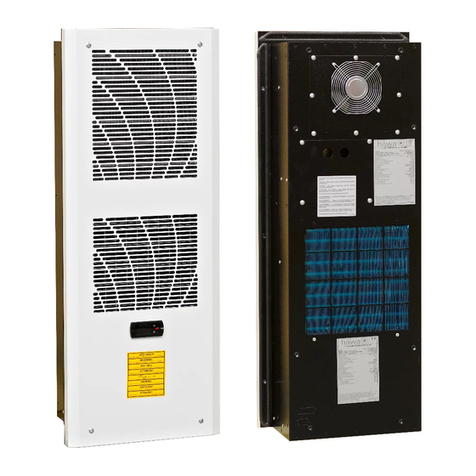
hawa
hawa 3122 Series operating instructions
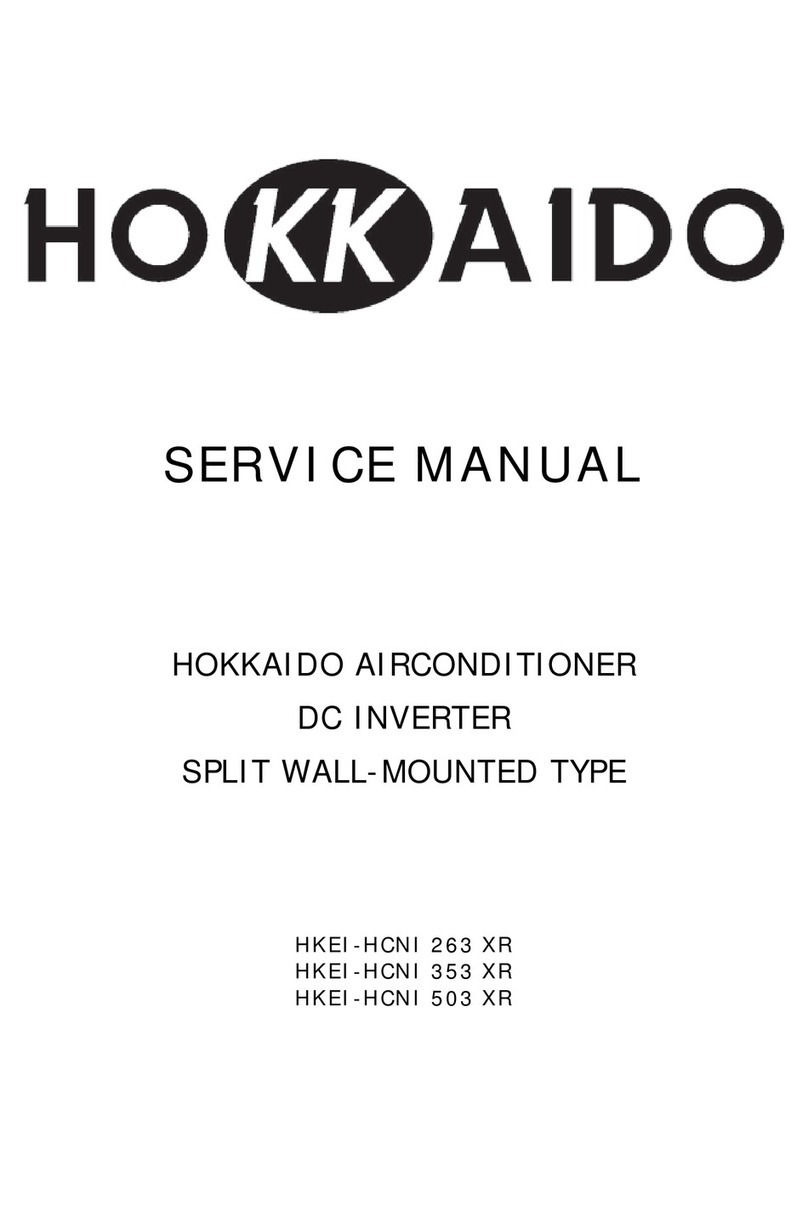
Hokkaido
Hokkaido HKEI-HCNI 263 XR Service manual
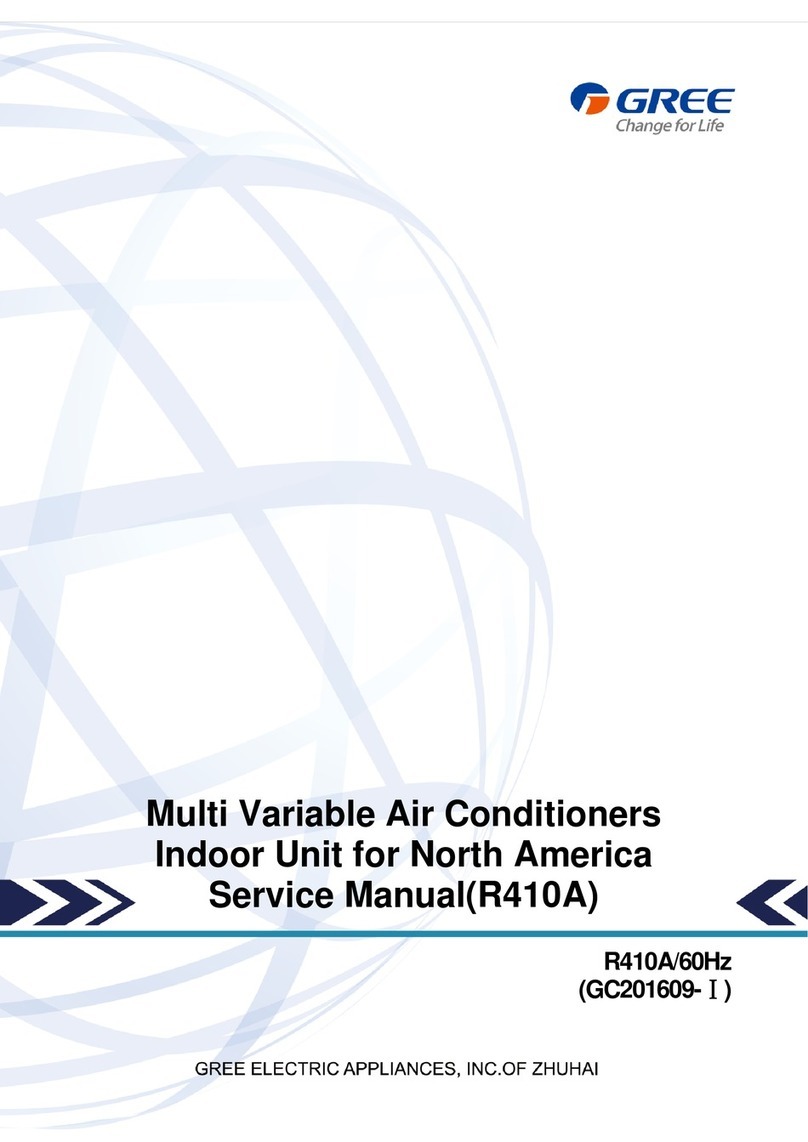
Gree
Gree GMV-ND07PLS/A-T(U) Service manual
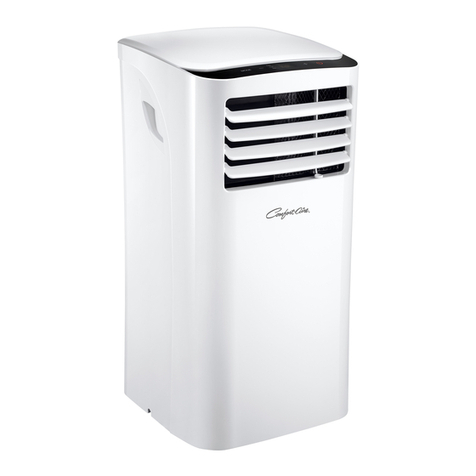
Mars
Mars COMFORT-AIRE PS-81G Owner's manual & installation manual








